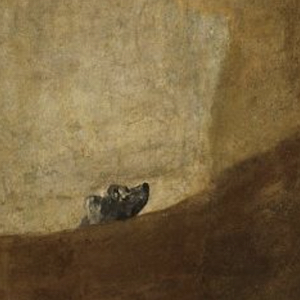Lovely Little Creatures
By Cindy Seda Yildiz
Earth as we know it is full of surprises, visually stunning, breathtaking, or even humorous. As humans, we enjoy the nature that sounds us and all the animal life that comes with it. We mainly know and see the animals that live on the land yet, above us in the sky and below us in the sea are countless lovely little creatures, some of them are cute, others scary but all of them have something extraordinary about them. They look unusual, and they are not something we get to view as there is large a gap between us and them, so it takes dedicated image-makers to present these faraway inhabitants of these border areas for us to enjoy. Find out more in Lovely Little Creatures here.
Fortunately for us, Dr Richard Smith and photographer Mark Harvey have given us a glance at those two worlds beneath and above us. Dr Richard Smith is one of the world’s premier marine biologists, an award-winning underwater photographer, and a leading expert on seahorses. He has launched a new book with Apollo Publishers, “The World Beneath: The Life and Time of Unknown Sea Creatures and Coral Reefs”; which is a sort of guide to hundreds of the ocean’s fishes and coral reefs. Mark Harvey, recognised as one of the UK’s leading practitioners in equine fine art photography. He also specializes in other animal photography, and he recently announces the release of “In Flight” on October 20th. A new limited edition printed collection featuring detailed studies of everyday free-flying British bird captured in photography as they go about their everyday lives.
Below enjoy both of their amazing work showing just a fraction of some of these lovely little creatures.

A pair of Bargibant’s pygmy seahorses, Bangka Island, Indonesia (page 124-125 of The World Beneath).
This seahorse is hard to recognise due to its camouflage and tiny size. Bargibant pygmy seahorses can change their colouration to blend almost entirely with their host fan. Bargibanti pygmy seahorses are extreme habitat specialists, spending their entire adult life on a single gorgonian coral on the surface of a single gorgonian coral.

In-Flight Collection: Magpie © Mark Harvey.
Surprisingly, this lovely bird does not have the best of reputations. Why though? Sometimes they are called thieves due to their interest in objects, and they are also voracious predators of songbirds.

A Raja Ampat coral reef located in Raja Ampat, West Papua, Indonesia (page 12-13 of The World Beneath).
So far, more than eighteen hundred different reef fish species have been found and recorded on the reefs of the Raja Ampat Islands. This location is home to more than ten times the number of hard coral species found in the Caribbean, plus, this area of West Papua province is legendary among experienced scuba divers as one of the top liveaboard dive destinations in the entire world.

In-Flight Collection: Blue Tit © Mark Harvey.
This bird, the Blue Tit is one of the most recognisable and lovely garden visitors due to its colours: a mix of blue, yellow, white and green. There are very common in the United Kingdom’s, so look out to see if a family of Blue Tit is hidden somewhere in your garden.

A Reef Manta filter feeding in the Maldives (page 112-113 of The World Beneath).
This species is highly intelligent and highly threatened, plus they are the largest rays in the world. What is interesting about this animal is the filters inside its mouth that are both interesting and wondering. They use the filters mainly when they feed themselves.

In-Flight collection: Coal Tit © Mark Harvey.
The Coat Tit is not as colourful as its relatives, but that does not make him less loveable. This cute little bird is mainly found in coniferous woodland, but can also be spotted in gardens and parks. The Coal Tit is grey above and buff below, with white cheeks, a black cap and a white neck patch.
For more information on Dr Richard Smith book, you can buy it here and to check Mark Harvey’s work you can go here. Or why not read about Eco Painting here.





